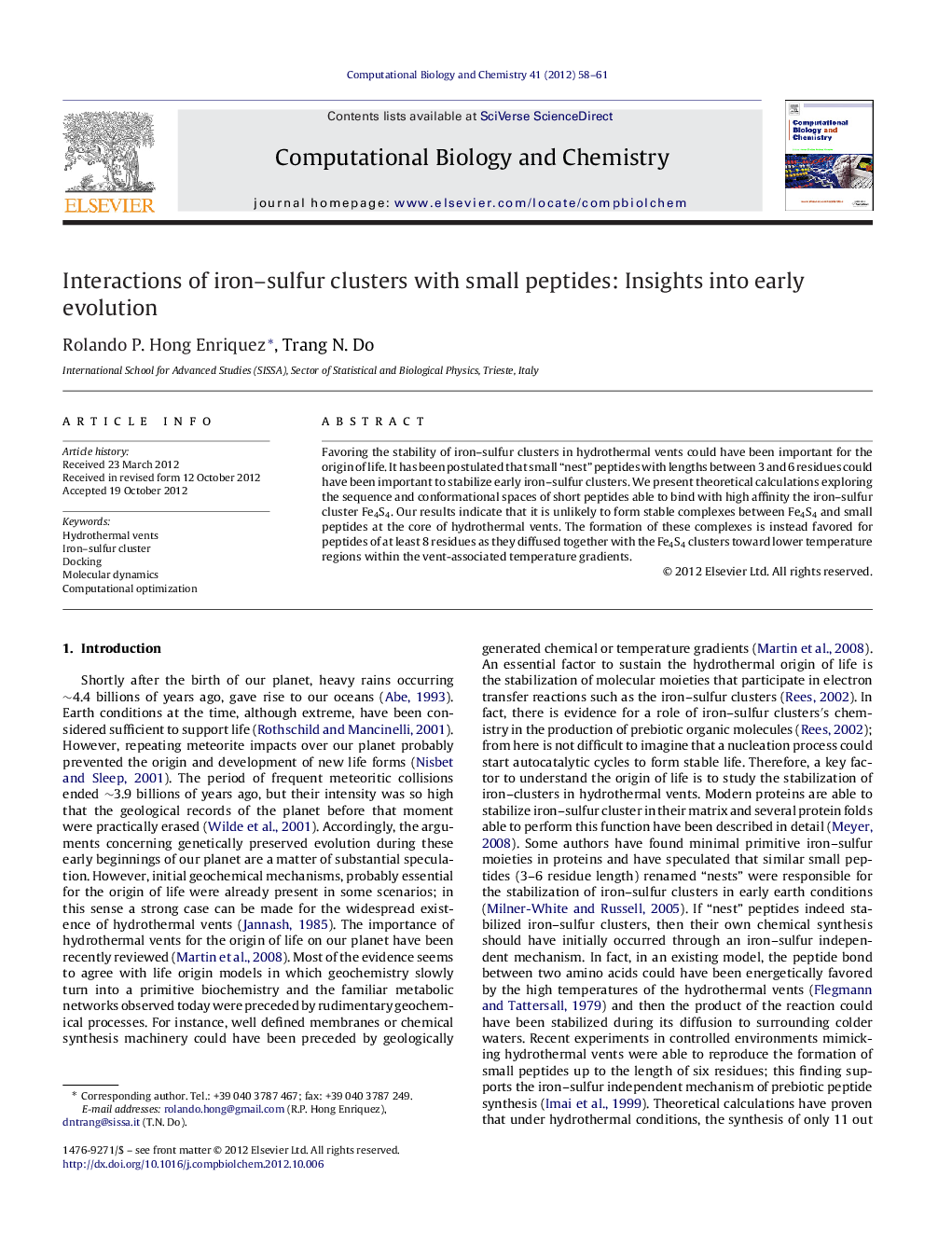| Article ID | Journal | Published Year | Pages | File Type |
|---|---|---|---|---|
| 15162 | Computational Biology and Chemistry | 2012 | 4 Pages |
Favoring the stability of iron–sulfur clusters in hydrothermal vents could have been important for the origin of life. It has been postulated that small “nest” peptides with lengths between 3 and 6 residues could have been important to stabilize early iron–sulfur clusters. We present theoretical calculations exploring the sequence and conformational spaces of short peptides able to bind with high affinity the iron–sulfur cluster Fe4S4. Our results indicate that it is unlikely to form stable complexes between Fe4S4 and small peptides at the core of hydrothermal vents. The formation of these complexes is instead favored for peptides of at least 8 residues as they diffused together with the Fe4S4 clusters toward lower temperature regions within the vent-associated temperature gradients.
Graphical abstractFigure optionsDownload full-size imageDownload as PowerPoint slideHighlights► Formation of peptide/iron–sulfur under hydrothermal conditions is explored. ► A novel computational peptide optimization technique is applied to iron–sulfur clusters. ► Iron–sulfur clusters and 8 AA peptides could have form initial non-covalent adducts. ► Stable adducts including Cys could have only occur away from hydrothermal vents.
